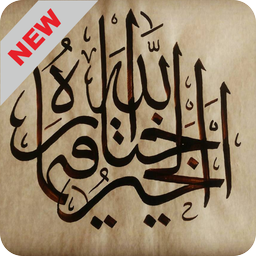
| نصب | ۱۳۰ |
| از ۲ رأی | ۳ |
| دستهبندی | سرگرمی |
| حجم | ۱۱ مگابایت |
| آخرین بروزرسانی | ۳ مرداد ۱۳۹۹ |

| نصب | ۱۳۰ |
| از ۲ رأی | ۳ |
| دستهبندی | سرگرمی |
| حجم | ۱۱ مگابایت |
| آخرین بروزرسانی | ۳ مرداد ۱۳۹۹ |
تصاویر برنامه








معرفی برنامه
One important phenomenon throughout the history of the spread of Arab culture throughout the surface of the earth is the emergence of very strong Arabic calligraphy in the cultural environment. It can be found in various regions, with different versions, and in various ways of deployment. The phrase of calligraphy along with other elements of civilization delivers Arab culture into something familiar to the local community. In Indonesia, the phenomenon has emerged since a very early period and subsequently seen in almost every object, whether directly related to scholarship such as literacy devices as well as on objects and buildings that support worship. In fact, calligraphy has been used as a symbol of self like a signature, and the subject matter that accompanies various ornaments carved on the tombstone.
The existence of powerful calligraphy, at the end of the twentieth century, is expanded also by its presence in the treasury of contemporary art, thus making this element of Arab culture acquire new developmental paths and futures. Arabic calligraphy, in the context of kesenirupaan has seized apresian wide enough so that maintained, especially by the community users of the corresponding script, which in general is the Muslims. However, in order not to stop in the middle of the road, these positive symptoms need to be supported by support that involves various parties in a comprehensive manner.
Calligraphy is a term derived from the word kalio and graphia in greek, which is generally interpreted as beautiful writing. In English calligraphy is called as calligraphy, while in Arabic better known as khath. In the cultural environment, calligraphy can be highlighted through two aspects, namely from the side of calligraphy as a script that becomes a symbol for the writing of letters or words and from its existence as a result and aesthetic process.
As a script for letter writing, calligraphy has a close connection with the mind and as a result and aesthetic process, calligraphy is closely related to the aesthetic conditions prevailing in a society. This connection can be explained by the understanding that the writing of calligraphy, as it is written in general, is a work that can accommodate the ideas of the author or painter. In these circumstances, calligraphy serves as a vehicle for storing, preserving, and revealing ideas and thoughts of a person or a particular community.
The idea, the mind, and the aesthetic power that the calligraphy expresses cover a vast and almost limitless aspect. The limits of its capacity are determined only by the limitations imposed on such thoughts, ideas, and imaginations. Under these conditions, calligraphy has the maximum power to emerge as one of the representative cultural phenomena and it is helpful to discover not only the trends that occur within a culture, but also finds a link between one cultural environment and another.
In fact, calligraphy has a very fertile development land in every culture that has special characters such as in society in India, japan, china, jawa, arab, and others. As found in historical relics, it appears that almost every script has received its development effort in the form of calligraphy. It can be found on an inscription that writes an agreement or reveals certain statements concerning a power. There are also calligraphy written on sacred buildings and public gatherings, and not infrequently also the calligraphic writing is found in its very sacred function, that is as part of a spell like the letter manu from Tibet, writing kanji from japan, or another .


برنامههای مرتبط






























